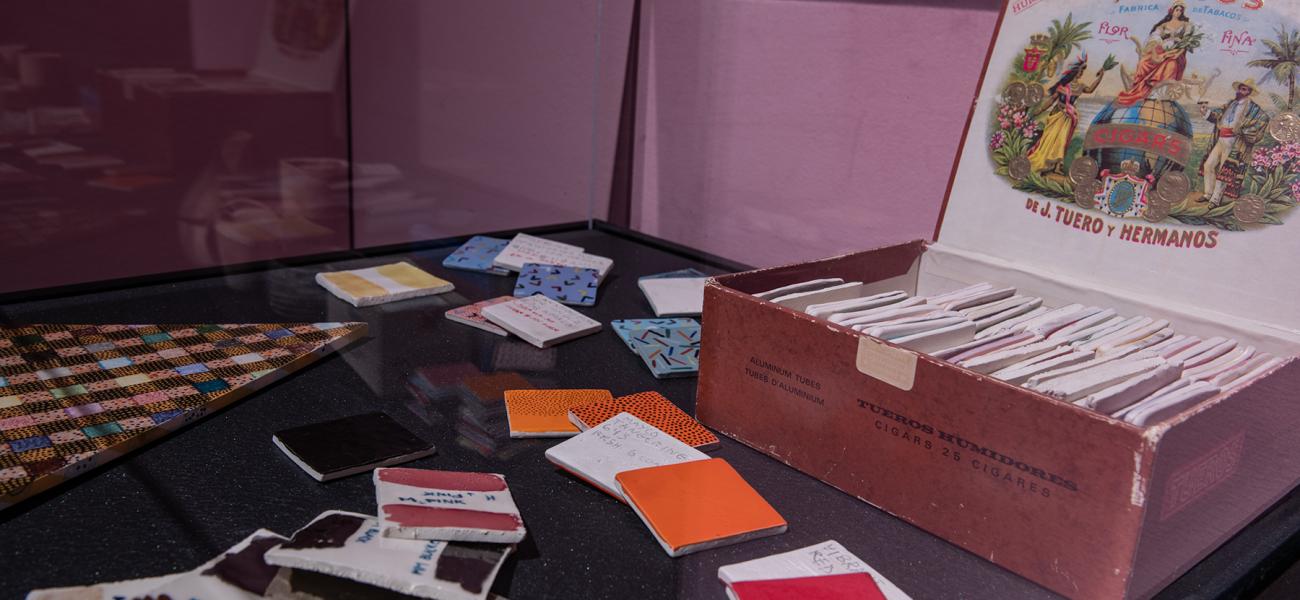Between 1978 and 1985, Mary Shannon Will created remarkable ceramic sculptures. Comprising smooth, geometric forms layered with abstract patterns, the sculptures exhibit intricate surfaces and luminous colour. Mary Shannon Will: People, Places and Things, an exhibition curated by Diana Sherlock on view at the Nickle Galleries in Calgary, Alberta, from Jan. 1 until Oct. 17, 2021, includes over twenty sculptures among the almost one hundred artworks on view.[1] While the exhibition includes sculptures, wall-mounted ceramic constructions, process-based paintings, drawings, digital prints and mixed-media works produced by the artist between 1968 and 2020, my particular interest lies with her sculptures.
With her sculptures, Shannon Will synthesized emerging directions and materials in studio ceramics with strategies deriving from avant-garde conceptual and process art. Around 1985, she turned her attention away from ceramics to drawing and painting, cementing her reputation in Canada as an important visual artist and maker of consistently original and affective works. It is tempting to dismiss her earlier foray into ceramics as an interesting but ultimately aborted venture. However, grounding these works in their historical period shifts our understanding of Shannon Will’s career path and helps to illuminate the contributions of women artists at this particularly fruitful period for studio ceramics.
Born in 1944 in Sampson, New York, Shannon Will's family moved often, as her father, a university professor, taught at various institutions. In 1962, he was appointed head of the newly formed Department of Sociology and Anthropology at the University of Iowa in Iowa City. She spent a year at a liberal arts college in Cedar Rapids, Iowa, prior to transferring to the University of Iowa, where she gravitated towards art. [2]
Taking her first university ceramics class came about by accident. The sculpture class she had wanted to take was full, so she enrolled in ceramics. The ceramics studios were located in barracks across the river from the main campus, a situation that created isolation while fostering a sense of community among students and faculty. The medium attracted her, and she quickly became immersed in a curriculum focused on technical studies of glazing, kiln building, and firing, as well as reading assignments, drawing, and workshops led by well-known contemporary ceramists including Peter Voulkos, Paul Soldner, Rudy Autio, Warren MacKenzie, Daniel Rhodes, and Ruth Duckworth.

